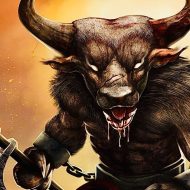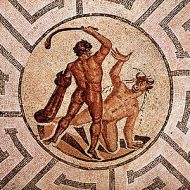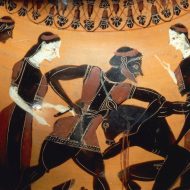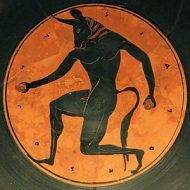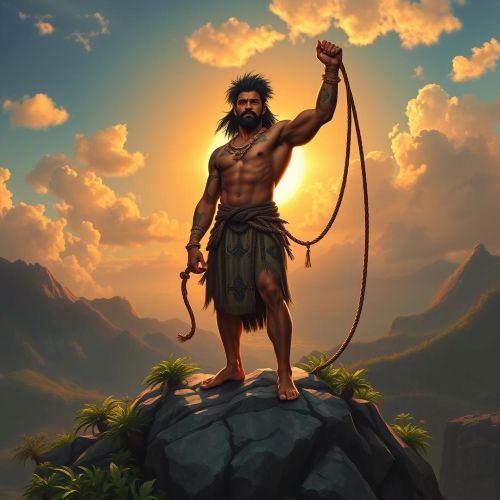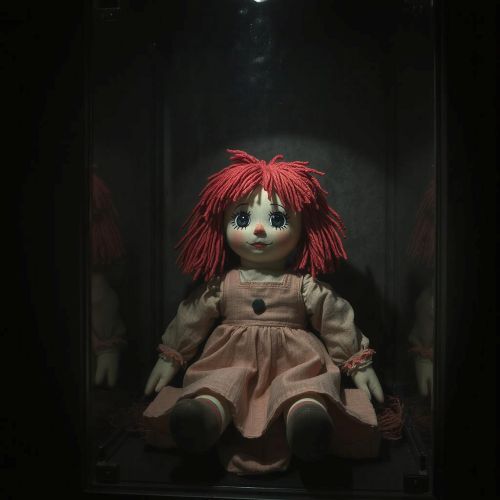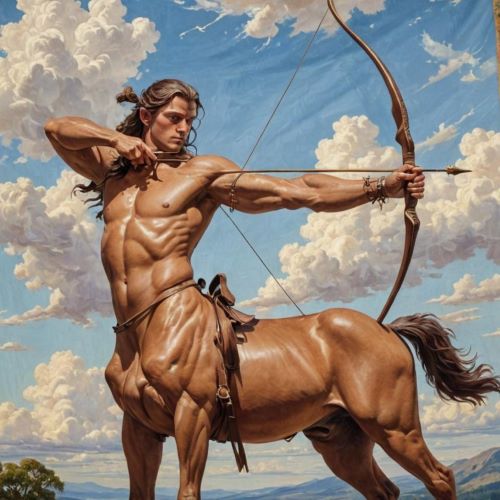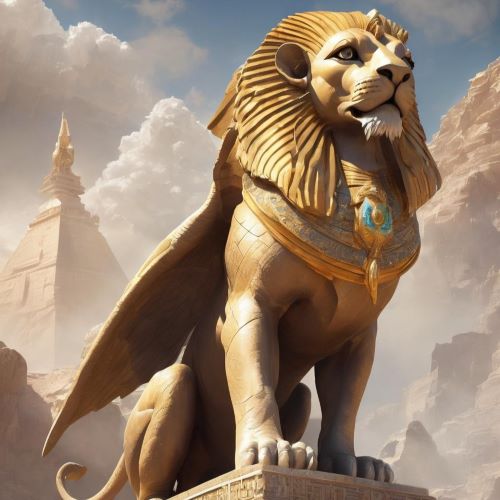Minotaur : The Man Bull
| Origin | Greek Mythology |
| Classification | Hybrids |
| Family Members |
Pasiphaë (Mother), Cretan Bull (Father)
|
| Region | Greece |
| Associated With | Superhuman Strength and Superhuman Speed |
Minotaur
Introduction
The mythological creature known as the Minotaur was one of the most gruesome creatures in ancient Greece. It was typically depicted with the body of a bull and a man’s head. The creature was created from the unnatural union of the Cretan Bull and Pasiphae, and it resided in the Labyrinth at the request of Minos. The great hero Theseus was able to kill the beast with the help of his daughter, Ariadne.
Physical Traits
The mythological creature known as the Minotaur is said to have the body of an ox and a human head. It can also be depicted with the head of a bull and the body of a man.
Family
After becoming the ruler of the island of Crete, Minos competed with his brothers for the throne. During his time in office, Minos prayed to Poseidon for a snow-white bull. He was supposed to sacrifice the animal to honor the sea god, but he decided to keep it due to its beauty.
Minos thought that the god would accept a sacrifice instead of a replacement for him. To punish him, Poseidon made his wife, Pasipha, fall in love with the bull. She made a hollow wooden cow out of wood in order to mate with the beast and later gave birth to the Minotaur.
Pasipha nursed the creature, but it grew to be incredibly large and became ferocious. Due to its unnatural nature, the creature devoured humans for food. After receiving advice from Delphi’s oracle, Minos ordered Daedalus to create a massive Labyrinth to house the beast.
Other Names
The compound word used to describe the mythological creature known as the Minotaur is composed of the Greek word “Minos” and the noun “bull.” This means that it refers to the bull of Minos. The Minotaur’s birth name, Asterion, which literally means “starry one,” suggests that the creature is related to the constellation of the bull, which is called Taurus.
Powers and Role
The son of King Aegeus, Theseus, volunteered to participate in the third tribute of youths. He told his father that he would destroy the mythical creature known as the Minotaur if he won. He also said that he would raise white sails if he won and to have the crew fly black ones if he was killed. Upon reaching Crete, the two daughters of Minos, Ariadne and Phedra, fell in love with him. Ariadne was struggling with the presence of the beast in her Labyrinth, which was eating her half-brother. She asked Daedalus for help to end the menace of the Minotaur. Before he started entering the Labyrinth, she rushed to tell Theseus about the help from the creator of the labyrinth
Daedalus gave Theseus a ball of thread in order to guide him through the Labyrinth. After entering the maze, Theseus tied a portion of the thread to the door’s outer section and proceeded into the area. He found the beast in the middle of the Labyrinth and killed it with his fists. Some accounts claim that he snuck in Aegeus’ sword and killed the creature with it. Theseus was able to escape the Labyrinth thanks to the gift given to him by Ariadne. He simply followed the thread back through the maze in order to get to the door and led the other Athenians to safety.
Modern Day Influence
The Minotaur has been a common reference and a character that has been portrayed multiple times in various contexts over the ages. There is no creative medium where the deadly minotaur has not been represented. The role of the minotaur is especially important in video games and board games like Dungeons & Dragons where it is a popular character. Numerous books, paintings, sculptures and modern mediums like poetry, literature and films have used the minotaur as well.
Related Images
Frequently Asked Questions
Who killed Minotaur?
The mythical creature known as the Minotaur was killed by Theseus, an Athenian hero. He volunteered to go to Crete to be sacrificed to the beast. He then killed it with the help of Ariadne, the daughter of Pasiphae and Minos.
Who was the Minotaur in real life?
The Minotaur is a mythical creature from Greek mythology, and as such, it did not exist in real life. It was said to have the body of a man and the head of a bull, and was kept in the Labyrinth on the island of Crete.
Who is the father of the Minotaur?
Greek mythology states that the Minotaur was Pasiphae’s child. The king Minos was tricked into letting a white bull be sacrificed by Poseidon as punishment. Instead of letting it die, he kept it alive. This resulted in Pasiphae falling in love with the beast.
What is the myth of Minotaur?
From Greek mythology, the Minotaur is depicted as a beast that has a man’s body and a bull’s tail and head. According to legend, it was Pasiphae’s child, born as a result of Poseidon’s punishment for sparing the white bull.
Was The Minotaur evil?
The Minotaur is a mythical creature from Greek mythology, portrayed as having the body of a man and the head and tail of a bull. It was kept in the Labyrinth on the island of Crete and fed with human sacrifices. Whether or not the Minotaur was evil is a matter of interpretation. Some may view it as a monster that needed to be destroyed, while others may see it as a tragic figure, trapped in the Labyrinth and forced to do the bidding of King Minos. Ultimately, the concept of good and evil is subjective and can vary depending on one’s perspective.

